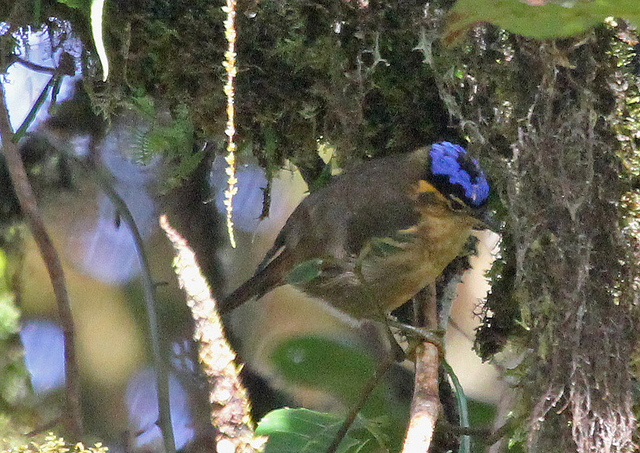
Ifrita kowaldi
TAXONOMY
Todopsis kowaldi De Vis, 1890, Owen Stanley Mountains, New
Guinea. Two subspecies.
OTHER COMMON NAMES
English: Blue-capped babbler; French: Ifrita de kowald; German:
Blaukappenflцter; Spanish: Hablantнn de Gorra Azul.
PHYSICAL CHARACTERISTICS
6.5 in (16.5 cm); 1.1–1.3 oz (30–36 g). A small bird with olive
upperparts and light brownish golden cheeks and underparts.
White eye stripe, black bill, and blue cap from forehead to
nape.
DISTRIBUTION
T. k. kowaldi: central and east New Guinea; T. k. brunnea: New
Guinea: central and west New Guinea. From 4,818 to 12,144
ft (1,460 to 3,680 m), mainly 6,600–9,570 ft (2,000–2,900 m).
HABITAT
Montane forest, particularly mossy forest.
BEHAVIOR
Active; unlike most species in this family, it is not shy and can
be easily observed. Usually seen in pairs or small groups,
sometimes encountered in mixed-species foraging parties.
FEEDING ECOLOGY AND DIET
Feeds mainly on insects, occasionally soft fruit. Forages from
near ground level on fallen logs to branches in the upper
canopy. Creeps up trunks and along branches like a nuthatchlike
fashion, probing in the moss for food and bending around
branches to inspect the undersides.
REPRODUCTIVE BIOLOGY
The nest is placed about 12 ft (3.6 m) from the ground. It
consists of moss made into a bulky, deep cup. A single egg
is laid; this is white with dark spots most densely placed at
the large end. Records of active nests indicate that the breeding
season is the mid-late dry season to early and late wet
season.
CONSERVATION STATUS
Generally fairly common, though thinly distributed in many
places.
SIGNIFICANCE TO HUMANS
Recognized by the local people as unsuitable for eating. It was
recently found that this bird has a toxin in its feathers and soft
tissues.
Other popular Animals
Photo Gallery of - Blue-capped ifrit
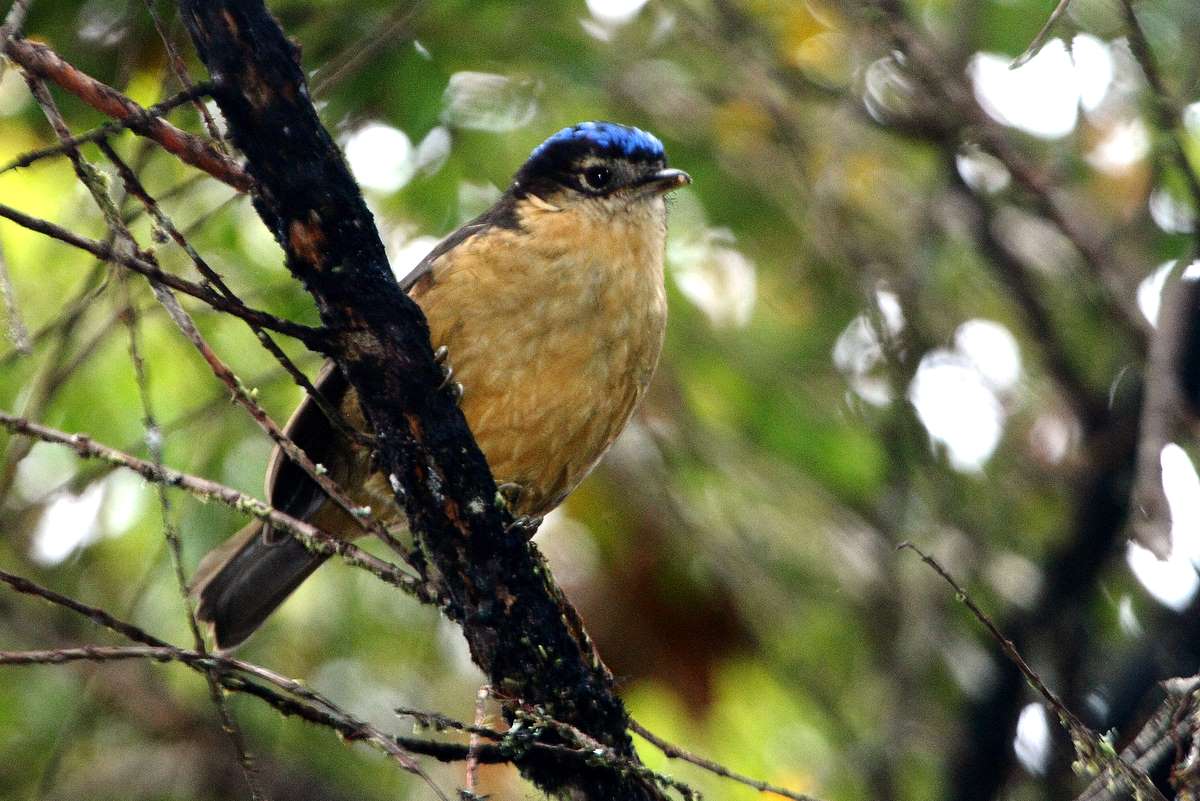
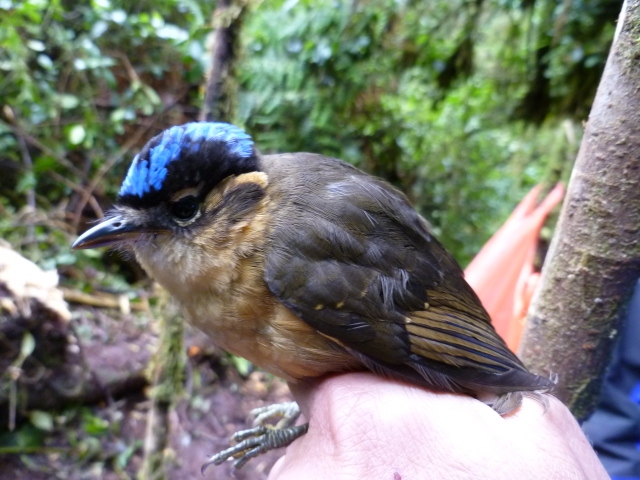
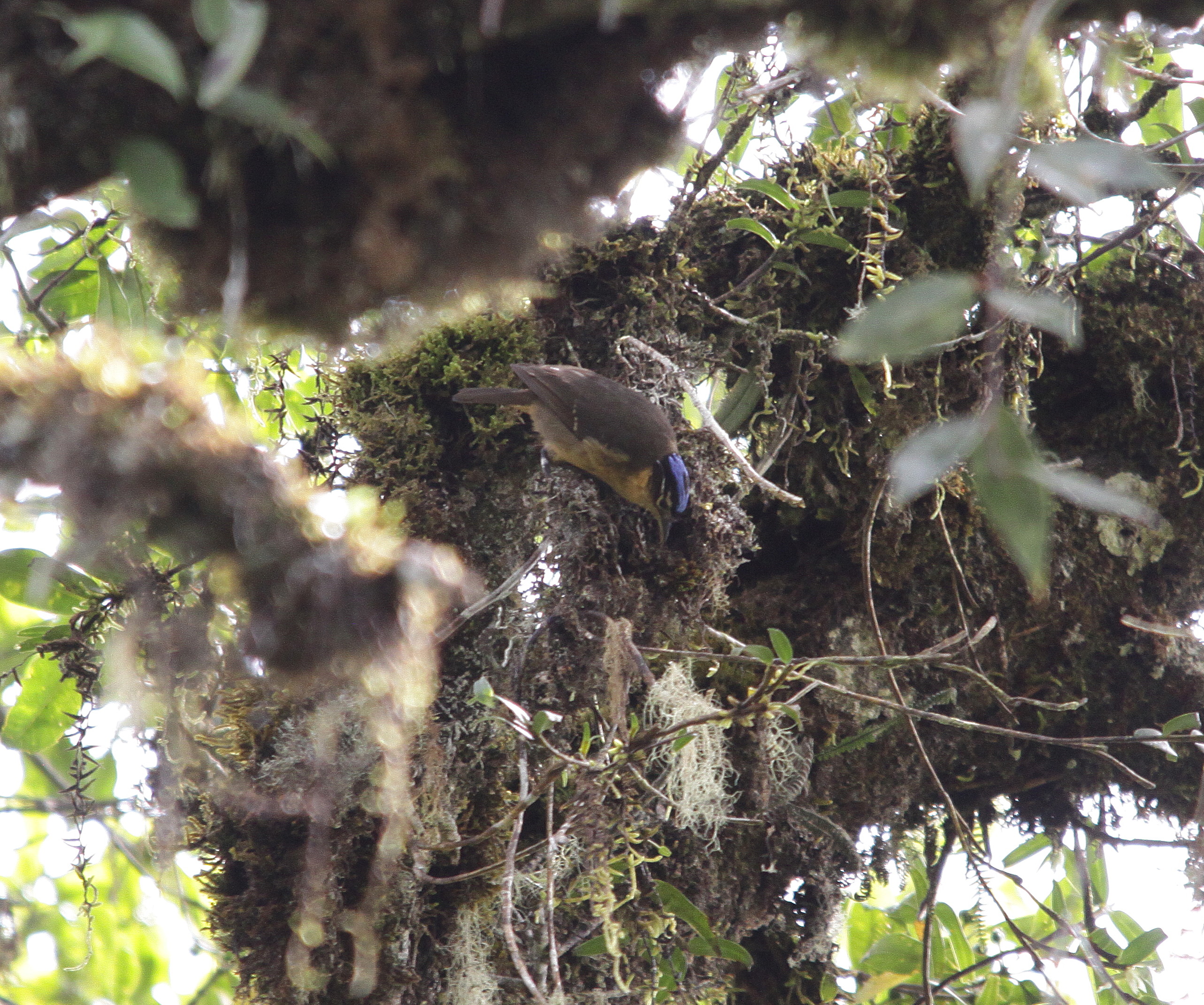
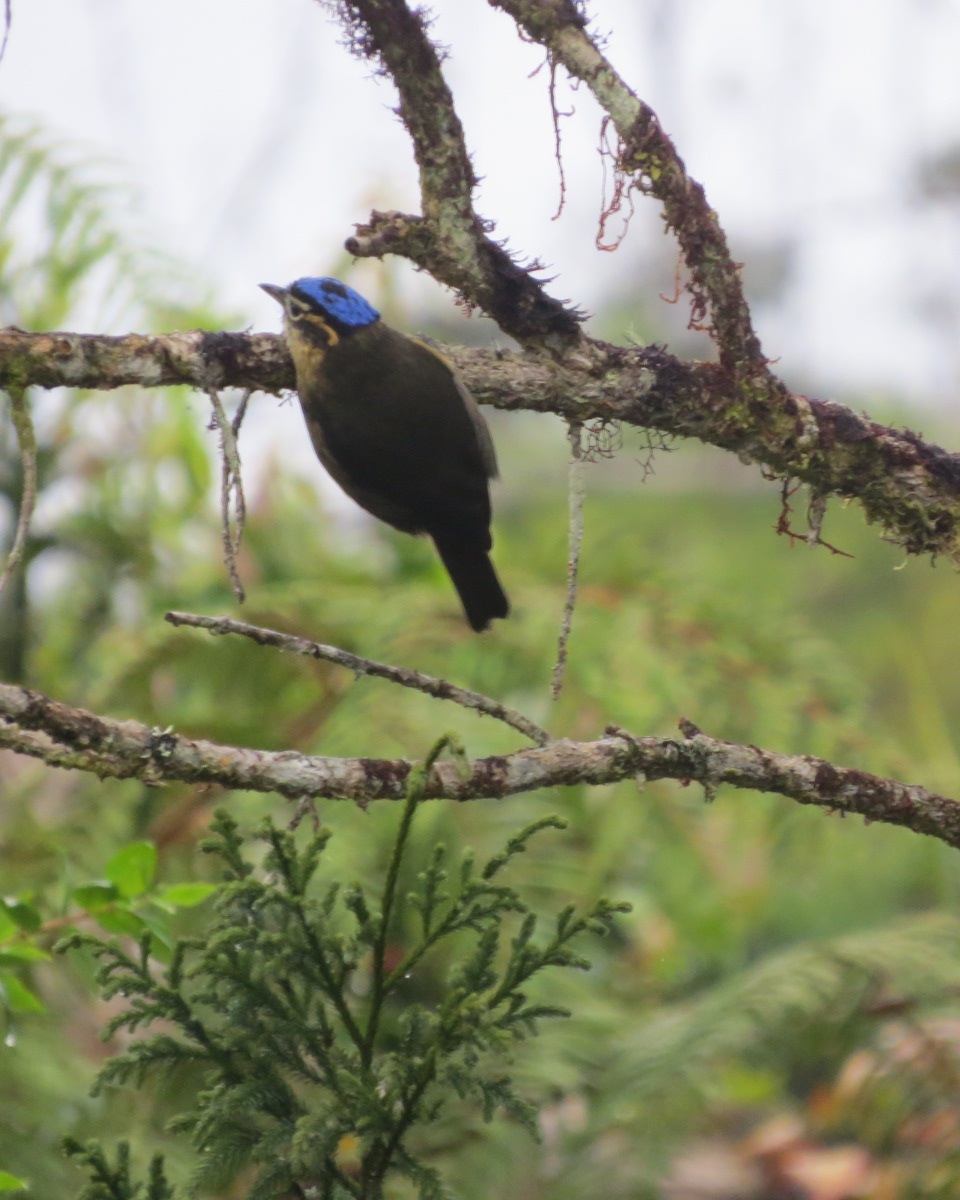
 Animalia Life
Animalia Life